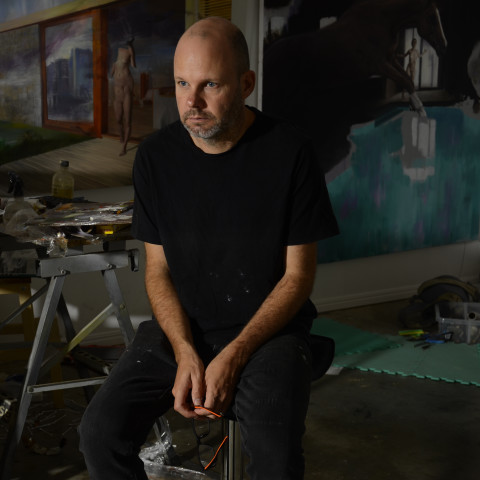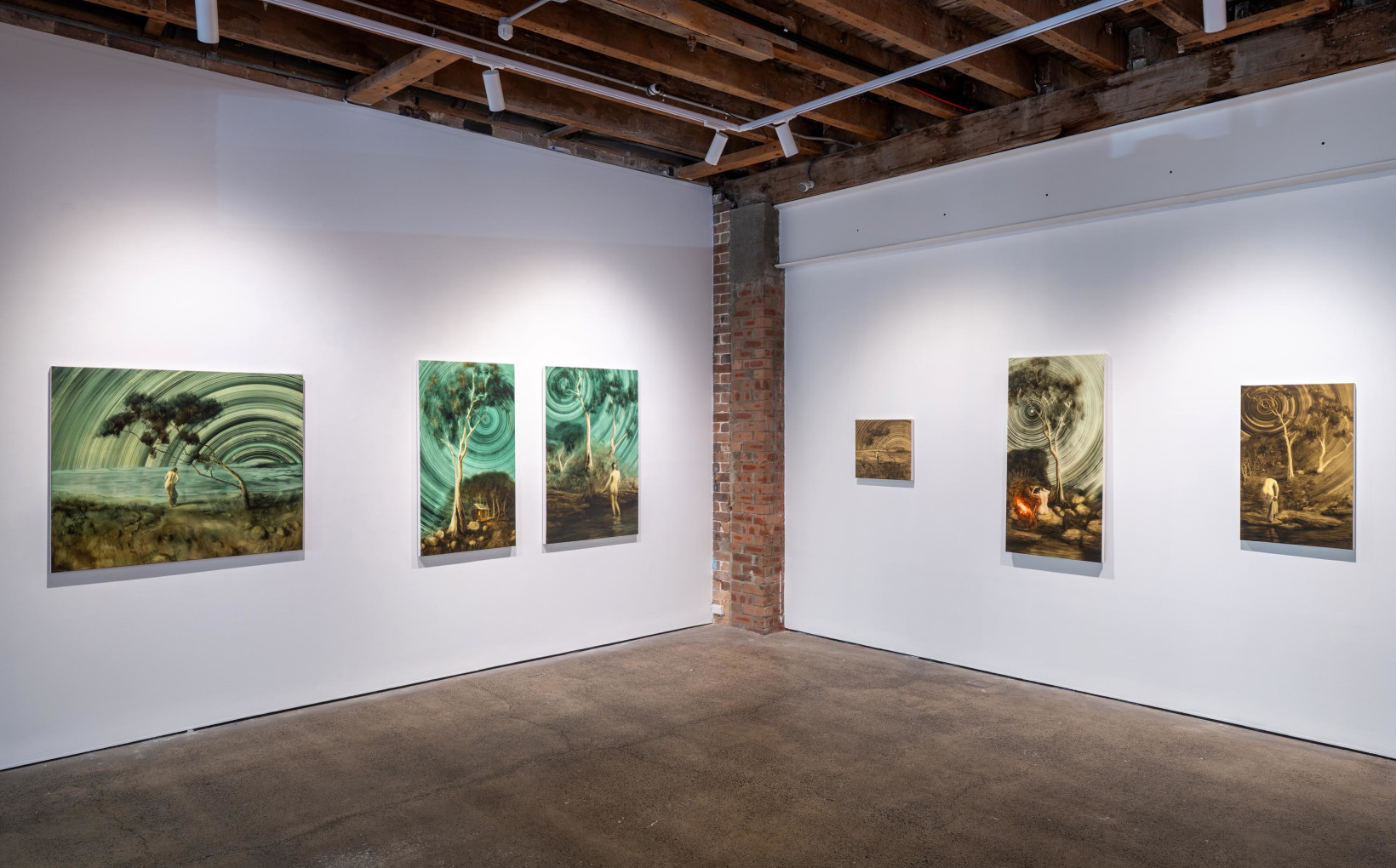
Born 1977
Lives and works in Sydney

In the deep hours of night, the gum trees lift their branches to the sky as if in quiet petition. Above them, the heavens turn. In Lumina, Ben Smith casts his gaze skyward, threading celestial awe through the tangled bush of Australian mythos.
Anchored in the tradition of the Romantic sublime, these new works trace the legacy of artists as disparate as Gustave Doré, Sidney Nolan, and Arthur Streeton. Smith orchestrates a vision that feels both personal and universal: an invitation to stand at the edge of the known world and peer outward, or inward, into the infinite.
The show’s title, Lumina, Latin for light, speaks to its ambition. Light, here, is not simply illumination, but revelation: of what we see and what we cannot comprehend. Echoes of Doré’s The Vision of the Empyrean resonate in the concentric spirals that dance above Smith’s eucalyptus canopies, evoking time-lapse photography of star trails. These celestial forms are not just formal devices; they act as metaphysical hinges, turning the eye and the mind between earthly and heavenly realms.
But Smith’s light is not only the light of the heavens. It is also the pale, dusty haze of a eucalyptus clearing at dusk, the phosphorescent shimmer of ghost gums by night. His bush landscapes are unmistakably Australian, deeply felt and deeply informed. You can see the expressive brushwork of Streeton in the wind-flicked branches, the atmospheric melancholy of McCubbin in the lonelier scenes, and the spectral tonality of Nolan in works where colour is pulled away as much as it is applied.
There is a lineage at play here: Smith’s vision emerges from the well-worn paths of the Heidelberg School, whose members—Streeton, McCubbin, Roberts, Conder, and Sutherland among them—sought to capture the Australian light with immediacy and fidelity in the late 19th century. Their plein air approach, exemplified in works such as McCubbin’s Lost (1886) or Streeton’s Still Glides the Stream (1890), defined an enduring national aesthetic: golden, haunted, and spacious. Yet, Smith does not merely quote this tradition. Instead, he queries it, recasting those sunlit idylls under a darker, more cosmic sky.
The Heidelberg painters were romantic nationalists; Smith is a romantic existentialist. In his paintings, the nude figure—often turned away, always unguarded—repeats like a motif across landscapes that seem vast enough to swallow them whole. There is both familiarity and strangeness in this gesture. We recognise the bush, but not quite the mood. These are not simply images of place, but meditations on placement: of humanity within nature, of the settler within a complex history, of the self within a fathomless universe. The ghosts here do not mourn; they dance. The past is not a burden, but a presence.
And perhaps that is what Lumina proposes most powerfully: that illumination is not merely about clarity, but connection. Smith links the golden summers of the 1890s with the dark woods of now; the vision of Doré with the tactile bush of Streeton. In these paintings, the bush is not simply a backdrop, but a threshold to cross. And if you look up, you may become dizzy with the turning of the heavens.
Anthea Mentzalis
August, 2025
Your monthly art news on the run plus invitations to Nanda\Hobbs exhibitions and events